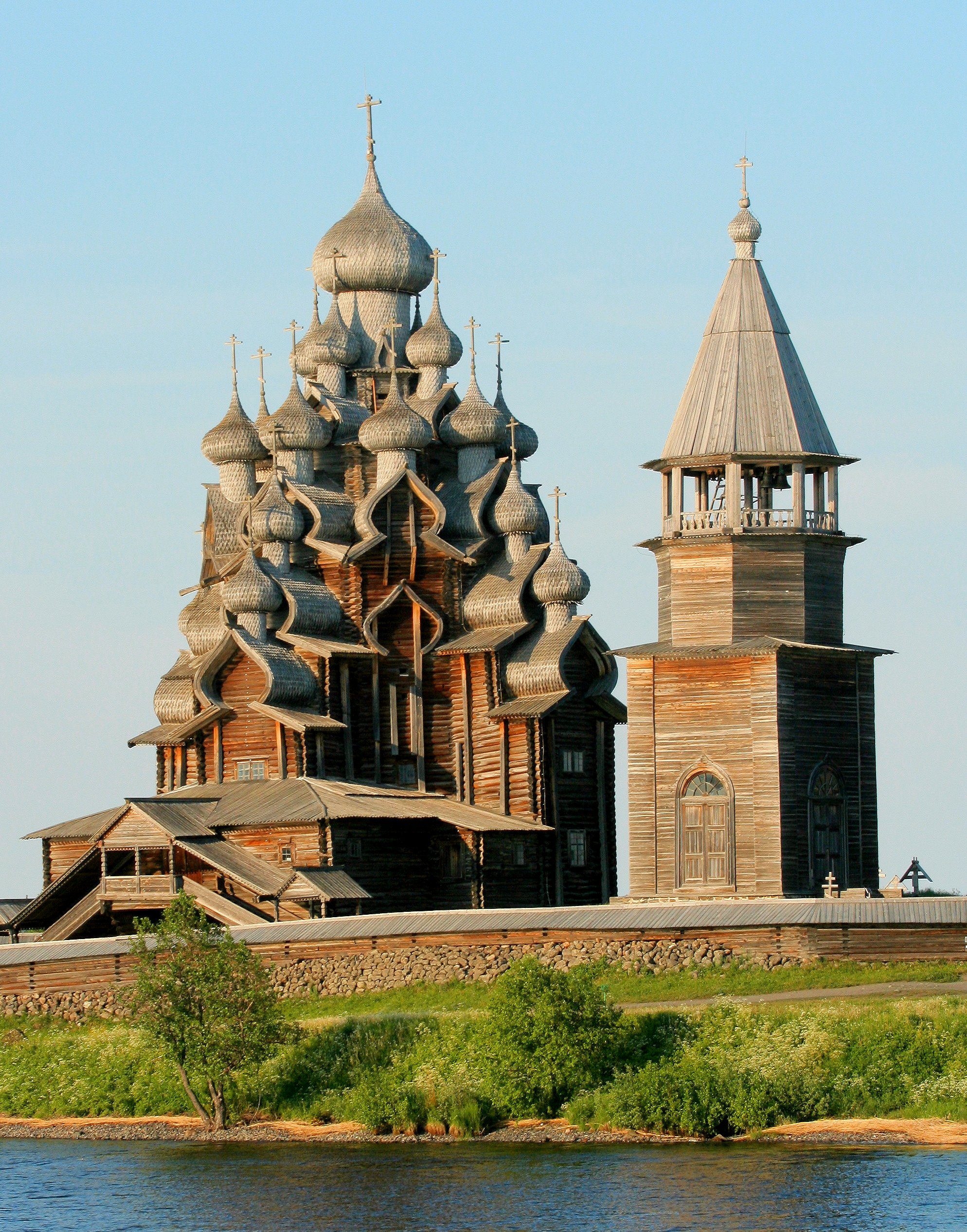This was the last day of our river cruise. I left the ship right after breakfast for a tour of Star City (Russian: Звёздный Городок, Zvyozdny Gorodok), the Cosmonaut Training Center. The Russians are quite right to be proud of their training center. It is hardly modern, but it has the world’s largest indoor centrifuge – a mechanism used to test Cosmonaut candidates. The capsule in which the candidate sits can be tumbled and rotated while the entire centrifuge is rotating and creating an artificially high gravity. The centrifuge is capable of generating 40gs, or 40 times the force of gravity, but no human could withstand that force. Our guide, a former cosmonaut candidate (who didn’t make the cut) passed out every time he was in the centrifuge. Of course they knew right away that he’d passed out, what with 64 electrical sensors on his body and a “dead-man” switch in his hand. He believes that he has suffered long term effects resulting from some of the early medical testing.
We also saw the huge water tank in which Cosmonauts and Astronauts (yes, our Astronauts train at Star City too!) can practice spacewalks in weightless conditions. A life-size mockup of a piece of space equipment is assembled on a platform which can be lowered about 15 meters (47 feet) under water. The Astronauts and Cosmonauts are suited up and weighted to offset any buoyancy of the air in their suits and lowered into the tank so they can practice with the tools they might have to use in space.
 Finally, we got to meet Sergei Zalyotin, Cosmonaut number 92. After their first successful flight, each cosmonaut is given a number. They’re up to over 100. Sergei addressed us first in English. Every Cosmonaut speaks some English, and every Astronaut speaks some Russian. But Sergei is more comfortable in his native tongue, and most of his presentation was in Russian and was translated for us.
Finally, we got to meet Sergei Zalyotin, Cosmonaut number 92. After their first successful flight, each cosmonaut is given a number. They’re up to over 100. Sergei addressed us first in English. Every Cosmonaut speaks some English, and every Astronaut speaks some Russian. But Sergei is more comfortable in his native tongue, and most of his presentation was in Russian and was translated for us.
We had lunch in the Star City cafeteria before we returned to the ship.
While I was at Star City, Adrianne went with a dozen or so other people and one of the Grand Circle Program Directors to Московская Хopaльнaя Cинaгoга, the Moscow Choral Synagogue. This is the main synagogue of Moscow and Russia. I wish I had been able to go on both tours. She had a wonderful time.
We also saw the huge water tank in which Cosmonauts and Astronauts (yes, our Astronauts train at Star City too!) can practice spacewalks in weightless conditions. A life-size mockup of a piece of space equipment is assembled on a platform which can be lowered about 15 meters (47 feet) under water. The Astronauts and Cosmonauts are suited up and weighted to offset any buoyancy of the air in their suits and lowered into the tank so they can practice with the tools they might have to use in space.
 Finally, we got to meet Sergei Zalyotin, Cosmonaut number 92. After their first successful flight, each cosmonaut is given a number. They’re up to over 100. Sergei addressed us first in English. Every Cosmonaut speaks some English, and every Astronaut speaks some Russian. But Sergei is more comfortable in his native tongue, and most of his presentation was in Russian and was translated for us.
Finally, we got to meet Sergei Zalyotin, Cosmonaut number 92. After their first successful flight, each cosmonaut is given a number. They’re up to over 100. Sergei addressed us first in English. Every Cosmonaut speaks some English, and every Astronaut speaks some Russian. But Sergei is more comfortable in his native tongue, and most of his presentation was in Russian and was translated for us.We had lunch in the Star City cafeteria before we returned to the ship.
While I was at Star City, Adrianne went with a dozen or so other people and one of the Grand Circle Program Directors to Московская Хopaльнaя Cинaгoга, the Moscow Choral Synagogue. This is the main synagogue of Moscow and Russia. I wish I had been able to go on both tours. She had a wonderful time.
This was our final day. Adrianne did most of the packing that evening, and we put our bags outside the cabin door before midnight. We were up at 1:30 for breakfast and left for Domedovo Airport at 2:30. Our return flights to the US were eventless. We were back in our trailer, totally exhausted, before 2:00pm New York time.



